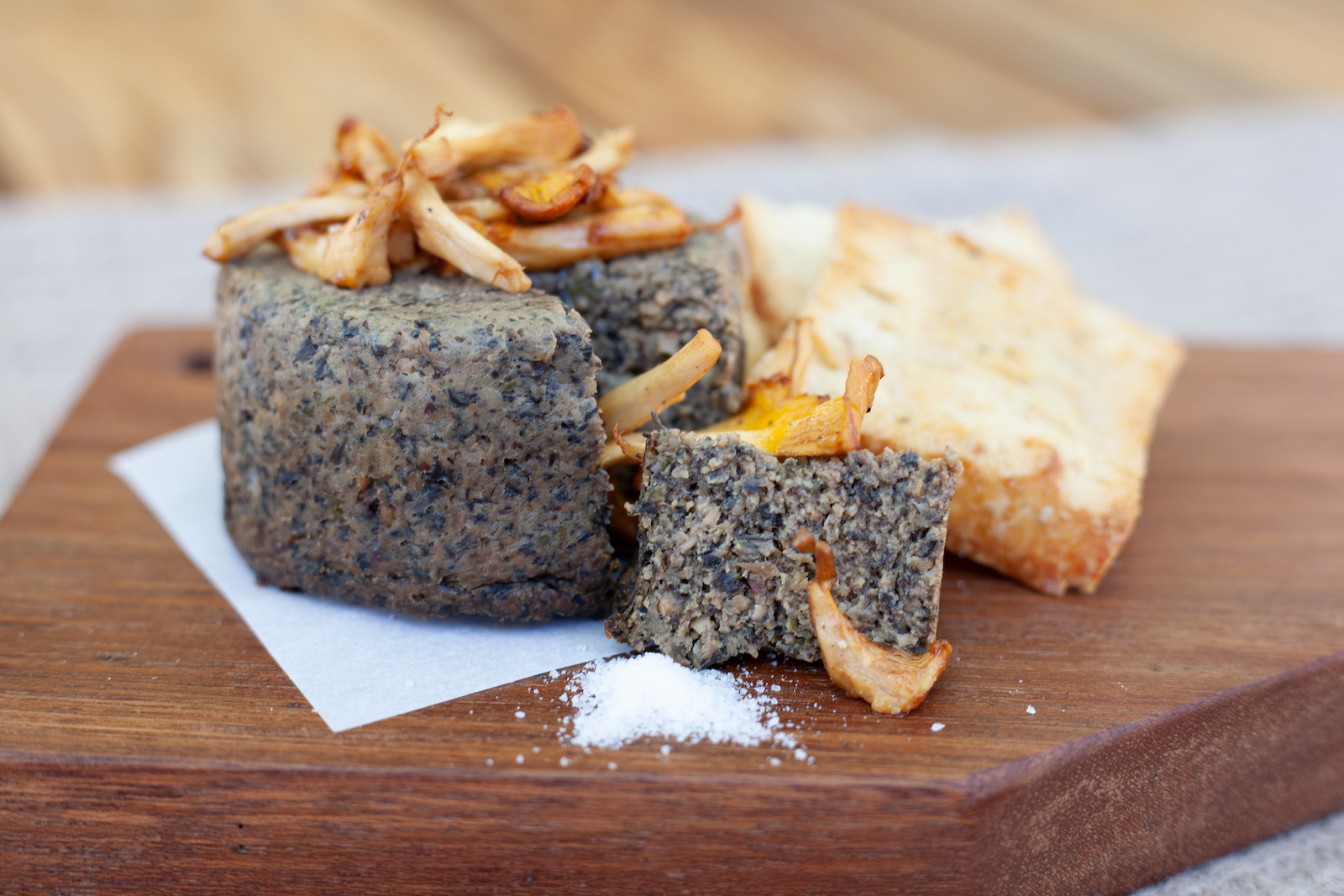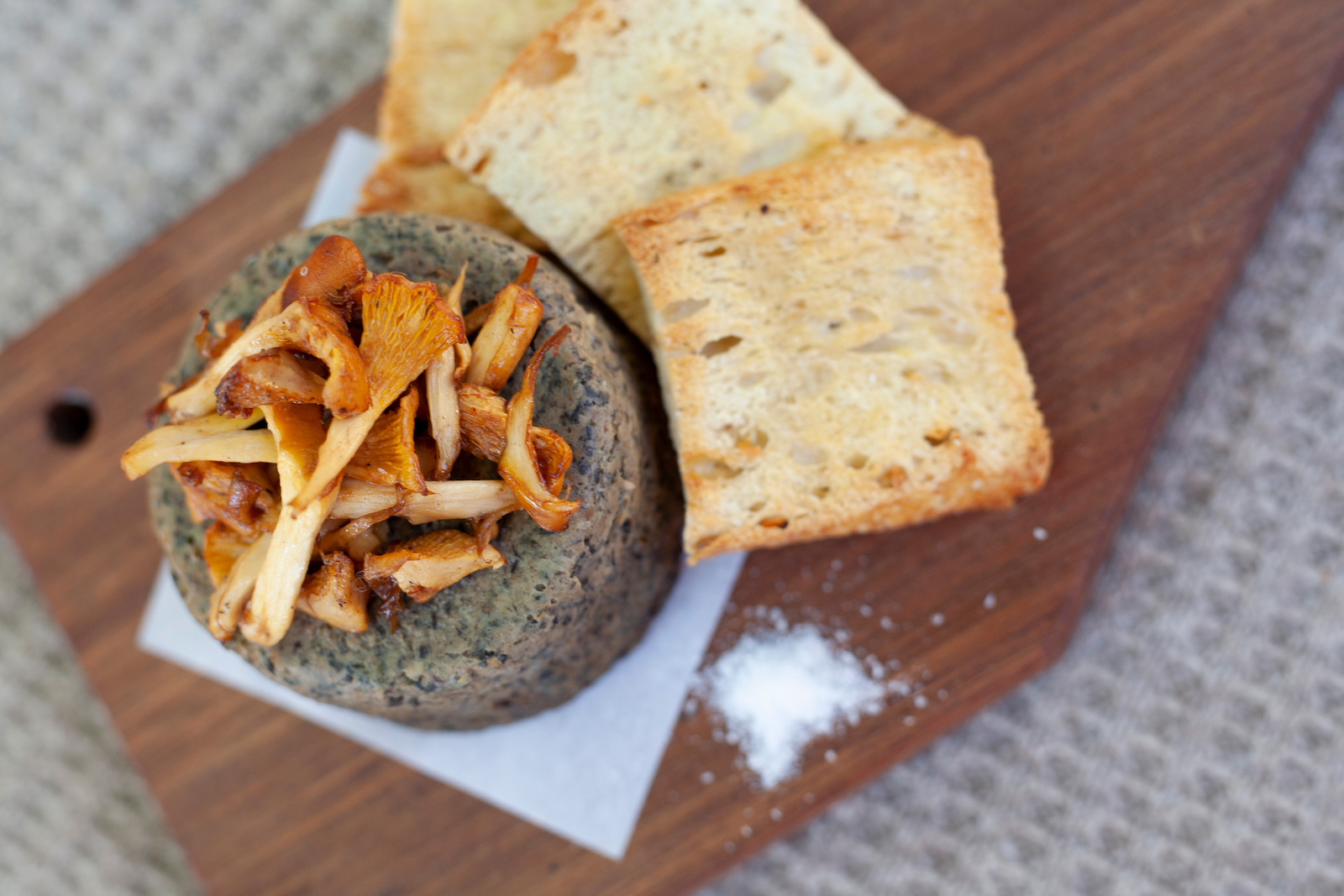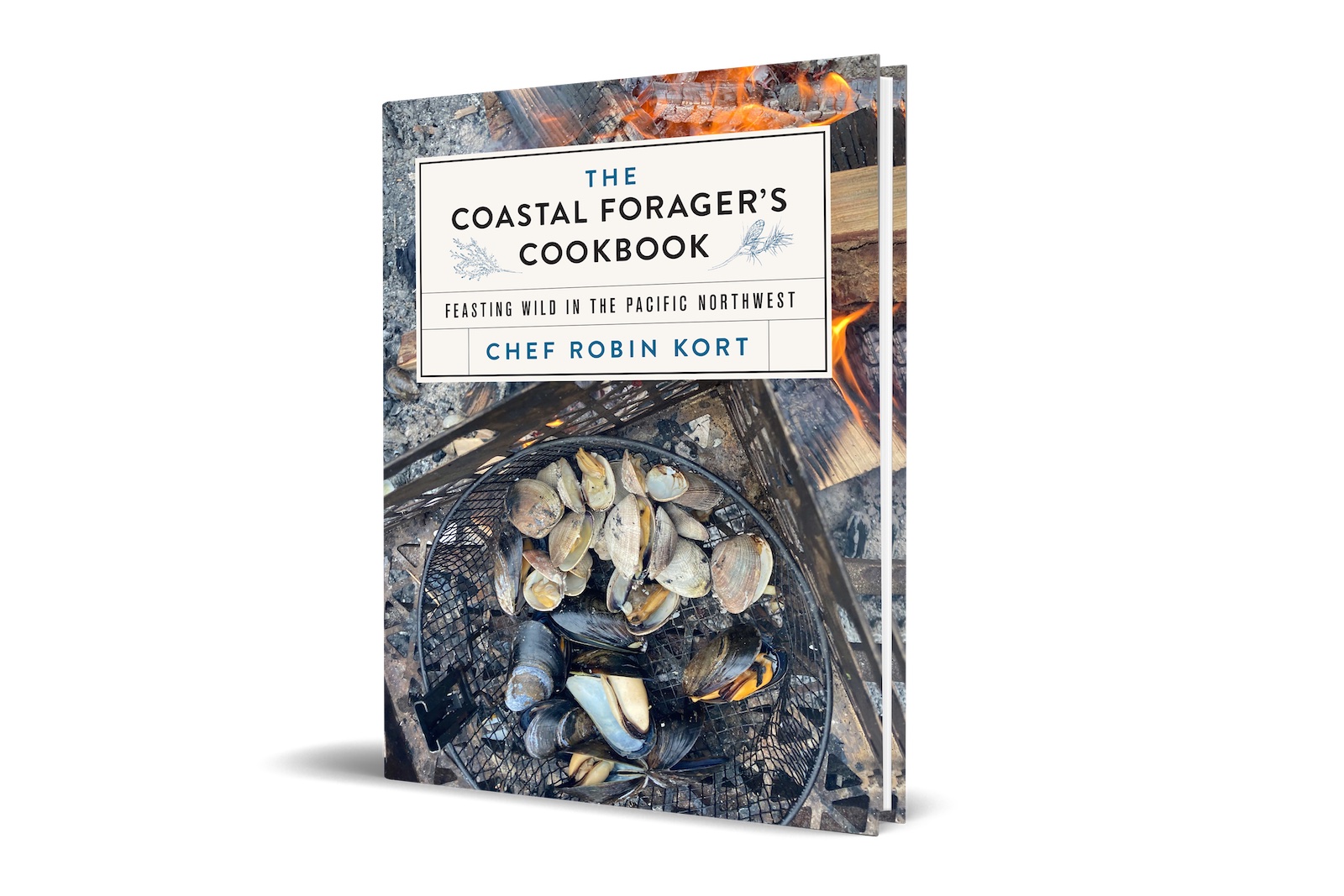The 40 recipes in The Coastal Forager’s Cookbook: Feasting Wild in the Pacific Northwest showcase found-in-the-wild ingredients such as mushrooms, seaweed, and flowers. Author and frequent forager Robin Kort is also a chef, a sommelier, and the owner of Swallow Tail Culinary Adventures in Vancouver.
Long, warm days are now a memory and some people get a little sad. For me, the cooler weather and first fall rains are a time of anticipation, as another wild and wonderful mushroom hunting season is about to begin. I remember glorious mushroom years, like back in 2015, when everywhere you looked, colorful little heads poked out of the green moss. Many were types of mushrooms that I hadn’t seen in years. I felt like Alice in Wonderland. When you’re a chef, finding a new or rare ingredient can make you feel like a pirate unearthing a hidden treasure. Some mushrooms are eye-catching and make a great addition to any menu; they can smell like anise, flowers, cinnamon, or seafood and taste spicy, bitter, or addictively savory. These culinary gems are what make me so excited for the rain and happy to go out and get drenched in the forest anytime.
One particular year stands out for mushroom foraging for me. I was hiking with my dad near Vernon, BC. We found dozens of huge, fire engine–red lobster mushrooms beckoning to us like Christmas lights. Lobster mushrooms by design mimic the pods in the film Invasion of the Body Snatchers. Their spores (mushroom “seeds”) float along until they attach themselves to a particular species of mushroom, like the large white mushroom Russula brevipes. The invader then proceeds to take over and turn its host mushroom lobster red in color and shapeshifts it into a blobby, gill-less form, which exudes a pungent seafood aroma as it ages. Lobster mushrooms are a surprisingly tasty mushroom, firm in texture with a unique seafood note. I have sautéed them and added them to pasta sauce, served them on steak, and fried them in butter for lunchtime toast with goat cheese and fresh herbs.
That same exciting, fruitful year, there were buckets of other edible mushrooms like shrimp Russula, another funky-colored purple mushroom that can grow as large as your hand and smells like shrimp paste, hedgehog mushrooms, big cream colored mushrooms with spines instead of gills, wacky neon yellow and orange chicken of the woods mushrooms that grow in layered shelves on old stumps, and bear’s head (Hericium abietis) mushrooms, which decompose dead wood and look like clusters of bright white tiny icicles. Each month from early August to late November where I am at the 49th parallel reveals new edible species to examine and then learn to cook with. Some turn out to be flavorless or too tough to be much use in my kitchen, but part of the fun is in the nibbling, poaching, sautéeing, and drying experimentation. I add new mushrooms to my pantry every year and enjoy expanding my culinary repertoire. The world of fungi is a deep, mysterious one. Even if you never harvest, I highly recommend you take the time to slowly study the forest floor and discover some of its secrets this fall.

Wild Mushroom Pâté
Our wild mushroom foraging classes fill up in fall with hungry hikers. This is a time to enjoy the dark, rainy months by pulling on your rainboots, breathing in the crisp forest air, and discovering where to find the fattest porcini and the most intoxicatingly aromatic matsutake among a host of other edible and fascinating fungi. I sometimes serve this mushroom pâté to my students as food inspiration. We gather around the picnic table and treat ourselves to a hearty spread of pâté, seaweed bread, and truffled feta, while warming our hands on a mug of hot, wild forest tea. What a perfect way to kick-start a journey into the forest to find your own edible treats.
Makes 1 loaf
Ingredients
1½ cups (375 mL) chicken or vegetable stock
1 cup (250 mL) dried porcini mushrooms (1 oz/25 g)
½ cup (125 mL) butter, divided
¾ cup (180 mL) minced onion
2 garlic cloves, minced
¼ cup (60 mL) amontillado (or your favorite medium sherry)
¾ lb (340 g) wild mushrooms like chanterelles, thinly sliced
¾ lb (340 g) oyster mushrooms, thinly sliced
4 large eggs
¼ cup (60 mL) toasted pumpkin seeds, ground
¼ cup (60 mL) chopped Italian parsley
2 tsp (10 mL) chopped thyme leaves
1 cup (250 mL) heavy cream
1/3 cup (80 mL) fine cornmeal
2 tsp (10 mL) salt
½ tsp (2.5 mL) pepper
1½ Tbsp (22 mL) lemon juice
Method
Bring the stock to a boil in a small saucepan over high heat. Remove the pan from the heat. Add the dried porcini to the hot stock to soak until softened, about 30 minutes. Using a slotted spoon, transfer the porcini to a food processor fitted with the steel blade and blend until smooth. Sieve the stock to remove any grit, then bring it to a simmer over medium heat and cook until reduced to about ¼ cup (60 mL), about 10 minutes. Stir this into the blended porcini.
Preheat the oven to 350°F. Grease a 4½- × 8½-inch (11 × 22 cm) loaf pan.
Heat 2 Tbsp (30 mL) of the butter in a large, deep skillet on medium heat. Add the onions and garlic and cook, stirring, until softened, 6 minutes. Transfer to a large bowl and set aside. Add the rest of the butter to the skillet along with the sherry and sliced mushrooms, cover and cook for 5 minutes. Uncover and cook, stirring occasionally, until the mushrooms are browned, 10–15 minutes. Blend the onion, sautéed mushrooms, and porcini mixture in your food processor until roughly puréed. Add the eggs, pumpkin seeds, parsley, thyme, and cream to the food processor and purée until combined. Using a spoon, stir in the cornmeal, salt, pepper, and lemon juice. Taste to make sure the pâté is salted enough. Pour mixture into the prepared pan and cover with foil.
Bake until set, about 40–50 minutes. The pâté will look wet in the middle, but it should come away from the pan edges slightly. Remove the pan from the oven and let cool to room temperature. Cover the pan and refrigerate the pâté for at least 6 hours to set further. Bring it to room temperature before serving. Spread on toasts or crackers.

Excerpted from The Coastal Forager’s Cookbook: Feasting Wild in the Pacific Northwest, copyright © 2023 Robin Kort. Reprinted with permission of TouchWood Editions. Discover more recipes.









